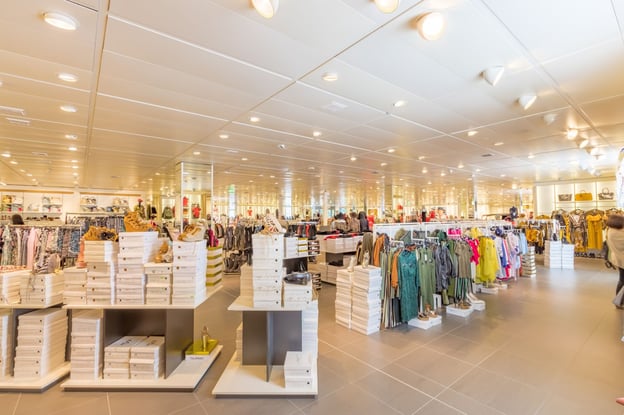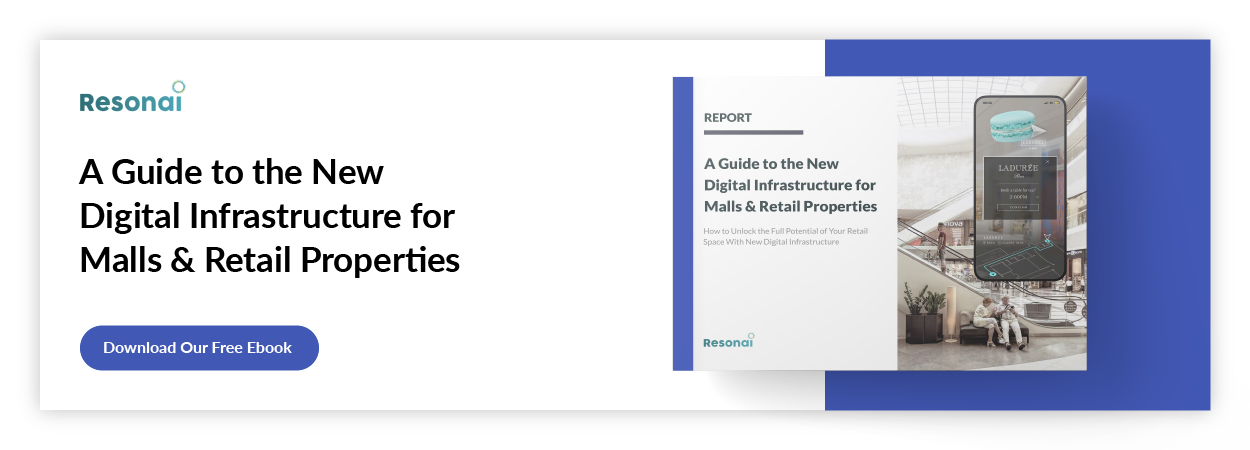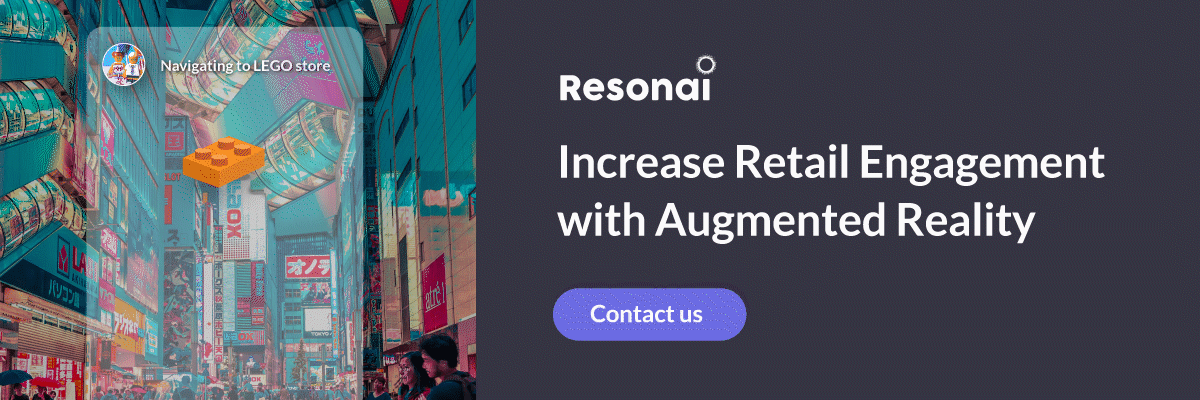7 Retail Store Layout & Organization Strategies That Boost Sales
If you want to master retail, you’ll need to master these layout strategies first.
 Retail store layout strategies control how customers interact with products, brands, and marketing material. The concepts have been evolving since Bon Marché introduced the department store in the 19th century, and retailers have been fine-tuning services to maximize sales and customer retention ever since.
Retail store layout strategies control how customers interact with products, brands, and marketing material. The concepts have been evolving since Bon Marché introduced the department store in the 19th century, and retailers have been fine-tuning services to maximize sales and customer retention ever since.
If you’re trying to get up to speed on retail without spending a few centuries iterating, this list will help you learn how to organize a retail store and discern the strategies that will serve you best. The key to the perfect store design begins with an understanding of your customers’ psyches. Here’s how to appeal to their natures to boost your bottom line.
Jump to a section…
Balanced endcaps sell products
Advertise discounts the right way
Product demos, product demos, product demos
Add levels to your retail store layout strategies with technology
Ready to take your store layout strategy to the next level? Check out our comprehensive article, "Store Layout: The Ultimate Guide."
Put popular items in the back
Keeping essentials in the back of a store has become a well-accepted part of retail strategy. The tactic is common in grocery stores, where staple items like milk and bread are kept as far from the entrance as possible. In doing so, retailers ensure that the customer stopping by for the bare necessities has to walk by a number of other enticing products along the way. The strategy taps into the visual stimulus element of human psychology, which can be a powerful tool for encouraging impulse buys.
The placement strategy isn’t limited to grocery stores. Studies have shown that visual stimulus improves sales across categories, with the type of display being the primary motivator. For instance, a standard shelf display will have a positive baseline effect on impulse buying behavior. In contrast, a mannequin display will positively impact impulse buying behavior towards clothes.
Retailers can fully take advantage of the concept by using a heatmap that shows how customers move throughout a store. Track the most commonly-used paths to your most popular items and place attention-grabbing displays along the way to maximize your chances of capturing impulse buys.
Eye level is buy level
Strategically planning the products you keep at eye level throughout your store is a crucial aspect of visual merchandising. The products you place at eye level will be the attention grabbers, so many companies are willing to pay a premium in the form of slotting fees to have their products featured in the eye level zone of retail environments.
Slotting fees are a nice boon, but you can also use eye-level placement as a supplement to other marketing efforts. Placing sale items at eye level is a one-two punch that appeals to shoppers’ motivations; using that prime location to introduce new items can also achieve greater awareness than signage or advertisements alone. Think strategically about how best to leverage eye level real estate within your store, and don’t be afraid to change tack to fit your current needs.
Balanced endcaps sell products
Endcap displays are an essential part of maximizing your sales per square foot, ensuring that you aren’t wasting any potential display space. However, your endcaps can’t be overly bombastic or plain if you want to capture your customers’ attention. Research has shown that moderately vivid endcaps are the most effective at selling, so the goal should be an endcap that provides stimulus without being overwhelming.
Try to balance the product information that is being shown against white space, neutral colors, and easy-to-read advertisement copy. Introducing audio, like music, can also help capture attention. Avoid anything that could be perceived as obnoxious, like shrill noises or overly crowded space.
Advertise discounts the right way
Researchers have studied and debated the most effective size, font, and color of sale signage for years. Some believe that sale prices should be large while original prices are smaller; others argue the opposite. However, recent research shows that retailers should advertise discounts in large fonts for maximum effect. Print and place signage about sales in locations with numerous sightlines, as it increases your chances of a customer spotting them from anywhere in the store.
While physical signage has been the norm, your signs don’t need to be static pieces of paper. In fact, it’s far more effective to go with more modern options, like digital signage. Digital signage tends to capture more engagement while being more dynamic, so it’s a valuable tool for advertising discounts within your store and offering personalized recommendations. Customers now expect personalized shopping experiences, so enabling them in your store can help you keep pace with — or exceed — your competitors’ offerings
For more information about digital signage, read our ebook, “A Guide to the New Digital Infrastructure for Malls & Retail Properties.”
Product demos, product demos, product demos
Our penchant for buying things we touch goes back to humanity’s hunter-gatherer days, when we would weigh the food we foraged with our hands. While most of us now spend our time scavenging through a big box store’s offerings rather than searching the wilds for berries, the satisfaction we get from holding things hasn’t disappeared, and that satisfaction can influence our buying habits.
If you want to tap into those primal instincts, present customers with product demo stations where they can pick up and interact with what you’re offering. Train your associates to encourage customers to hold things. When we put the item in our hands, our brain increases feelings of perceived ownership, which might be the nudge someone needs to make a purchase.
Stores that cannot offer physical product demos due to their retail layout or some other concern may want to provide digital demos, like augmented reality demos. Using augmented reality to show off products introduces a “wow” factor, and it’s a space-conscious way to inform your customers about new arrivals.
Leave space for luxury
Humans aren’t always rational. Creatures of habit? Yes. Creatures of reason? Not so much. Our deeply rooted irrationality is part of what drives our desires to purchase luxury goods, even if we don’t need them. Luxury items are wants instead of needs, but those wants can make us feel better once we’ve acquired them; they give us a sense of fulfillment, belonging, and accomplishment. And luckily for retailers, luxury items are high-margin products.
To sell those high-margin, feel-good items, retailers need to combine every other aspect of layout tactics. Place luxury items at eye level, clearly advertise discounts on them with a large font, put them on end cap displays tailored to their product category — everything. Luxury item sales are where your layout comes together, tying a neat bow on your strategy.
Add levels to your retail store layout strategies with technology
Technology can enhance retail space planning, creating a digital dimension to a physical store. With digital signage, augmented reality, and immersive digital experiences, retailers can provide customers with a crucial driver of retention — joy. Resonai’s Vera platform contains all of the tools retailers need to make the digital aspect of their business come to life, like indoor navigation and real-time customer heatmaps. Are you ready to learn more? Get in touch with Resonai today and set up a free demonstration.
Subscribe to Our Newsletter!
Read More
9 Small Retail Store Layout Tips, Tricks, and Examples for 2022
In 2008, Usain Bolt set the record for the 100m dash with a blistering time of 9.69 seconds. While...
Store Planning: The Ultimate Guide for Retail
Store planning is both an art and a science. Elements of behavioral psychology, geometry, and...
How a Grid Store Layout Affects Retail Sales
There’s a wide variety of potential store layouts, but the grid store layout has long been the most...

